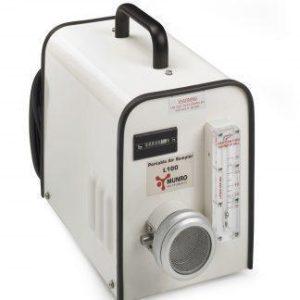The Importance of Air Sampling:
Air sampling measures and monitors air quality to establish a healthy workplace. Depending on the company, it may be necessary to establish what particles are present in the air and how they may affect workers exposed to them.
What Does Air Sampling Involve?
Air sampling is a method for identifying airborne pollutants in a given environment. To detect air pollutants such as gases, vapors, dust, and fibers, specialized devices are employed. It is essential to collect air samples since inhaling these compounds can induce respiratory problems. Air sampling is frequently employed in firefighting operations, chemical production facilities, building sites, coal mining companies, and research laboratories to assess the quality of working life and protect people.
Consequently, Air Samplers enables businesses to evaluate the quality of the air and determine appropriate safety precautions. Air sampling is necessary for any industry in which airborne pollutants are widespread.
Why Must Air Sampling Be Performed?
- The safety of workers in the workplace could be determined too by checking the concentrations of the contaminants present in the air of the workplace.
- The presence and level of harm of the pollutants can be identified by businesses through air sampling.
- Air sampling can assist businesses and firms in making choices concerning air quality. Assessing the exposure of employees to airborne pollutants is a crucial aspect of the operations of most businesses.
Classifications of Air Sampling Tools:
Air Pollutants of various types include fumes, fibers, dust, mist, gases, vapors, etc. Various tools effectively capture carious pollutants.
- Inhalable Samplers: These samplers are designed to catch particles up to 100 micrometers in diameter. Companies use them to determine the risk of employee inhalation of contaminants.
- Filters: Porous membranes are used to pass air through the filter media. The air can travel through the small pores on the medium’s other side that traps pollutants. Substances such as PCTE, MCE, silver, quartz, PVC as well as glass fibre are employed in filter membranes to remove impurities from water and other liquids.
- Bubblers and Impingers: These are more effective on particles than bubblers are on gases and vapours. They gather impurities via the bubbling of air through a liquid binding the contaminants. They are frequently used in combination with an area pump to collect samples of pollutants in a specific region.
- Air sampling pumps: Airborne pollutants are gathered with the help of filter media and air sampling pumps. They are effective in air quality sampling done indoors. Among the pollutants, they operate effectively with hazardous particles, lead, asbestos, beryllium, mold spores, silica, and respirable dust.
- Cyclones: Filter cassettes are attached to cyclone assemblies to remove bigger, harmless particles from the air. Larger particles are pushed into grit pots by centrifuges that spin rapidly and require fast air rotation to do so. Filter cassettes then get clogged up with airborne particles.
- Filter cassettes: These cassettes use pumps to capture airborne particles. Mold samples are easily collected by such cassettes. Organizations can collect air pollutants from work settings for laboratory studies with their help of them too. To facilitate air sampling, cassettes are preinstalled with filters.
Varieties of Air Sampling:
- Personal: A worker (just one) has to normally wear testing equipment that is worn a few inches from his face. He is the only individual that can interact with the air. The apparatus collects a fair representation of the particles in interaction with the individual.
- Static: It is utilized to gather samples of ambient air. It is especially helpful for finding pollutants. Generally, sample devices for ambient air are typically bigger and also flow rates are high. It allows them to capture a large volume of air in a small span.








